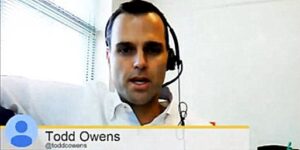
Transformative Conversations And Enculturation
“How many times Do we chaff against the repetition Straining against the faith Measured out in coffee breaks…” —Neil Peart His smile ricocheted off the

“How many times Do we chaff against the repetition Straining against the faith Measured out in coffee breaks…” —Neil Peart His smile ricocheted off the

The balance of power is shifting in the employer/employee relationship. What does it mean for the future of work? The #TChat crowd weighs in

Employers invest significant time and money to find the best candidate. However, too many companies are jeopardizing their investment by failing to unify the subsequent

How can employers move the meter on their job candidate experience? Experts share survey results with the #TChat crowd

What happens when nearly 50,000 job seekers speak out about their candidate experience? Great insights surface! Let’s discuss at #TChat events

We know that mobile tools are rapidly transforming recruitment. But what about the rest of the hiring process? #TChat talks about why employers need to get ahead of the curve

Mobile recruiting is revolutionizing HR. Now it’s time for mobile hiring to step in where the mobile candidate experience leaves off…

Mobile recruiting is on the rise. What about mobile hiring? The TalentCulture community talks with HR technology experts

What can today’s graduates expect as they enter the work world? The TalentCulture community talked about this and more during a whirlwind week at #SHRM13…
If it wasn’t for those pesky, messy, meddling humans, the world of work would actually work flawlessly. We’d work together happily and collaboratively, without deceit,
In today’s increasingly informal work environment, what’s the most appropriate want to bring new hires and contractors into the fold? How can you make a lasting first impression, and support new hires throughout their indoctrination?
Successful talent strategy requires much more than filling open job requisitions. Look closer at your organizational culture — what does it say about your company?
How do your new employees discover their role – and meaning – within the context of your organization? What have you done to help?